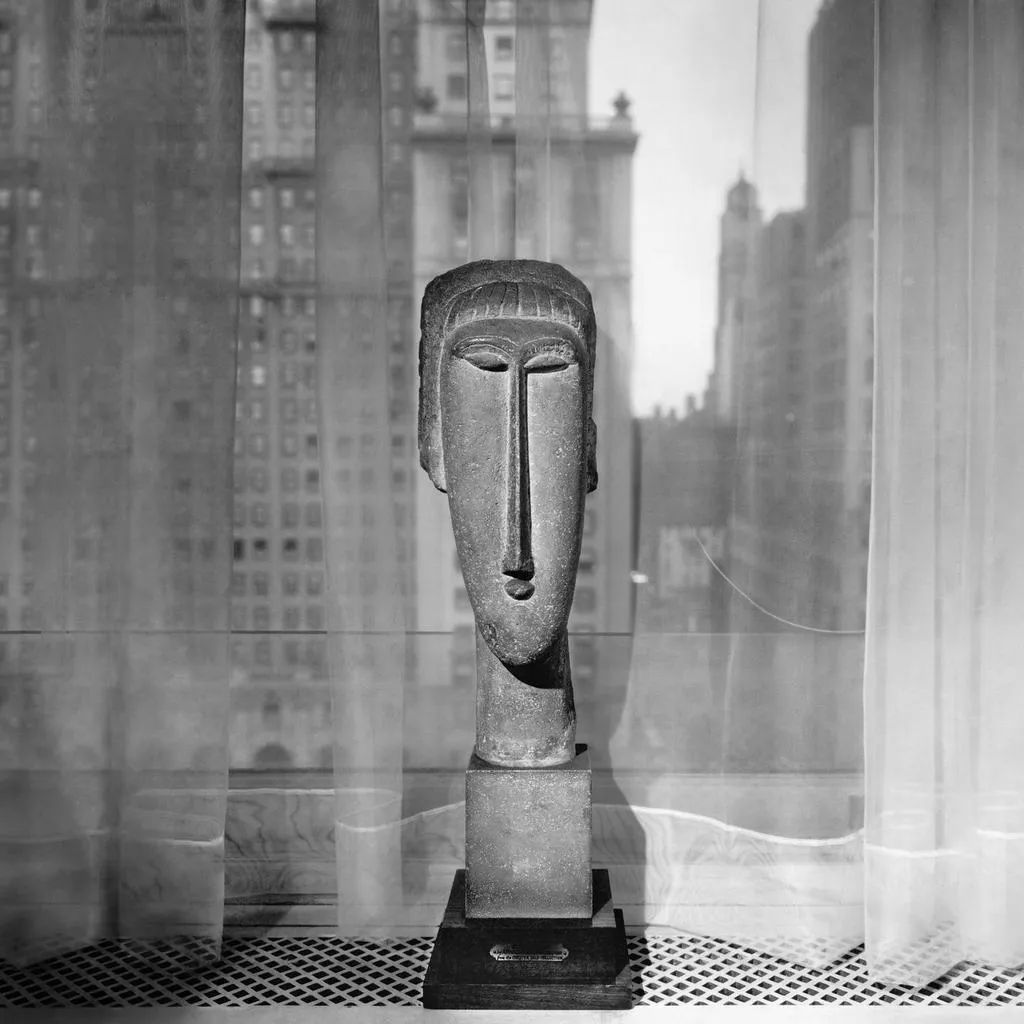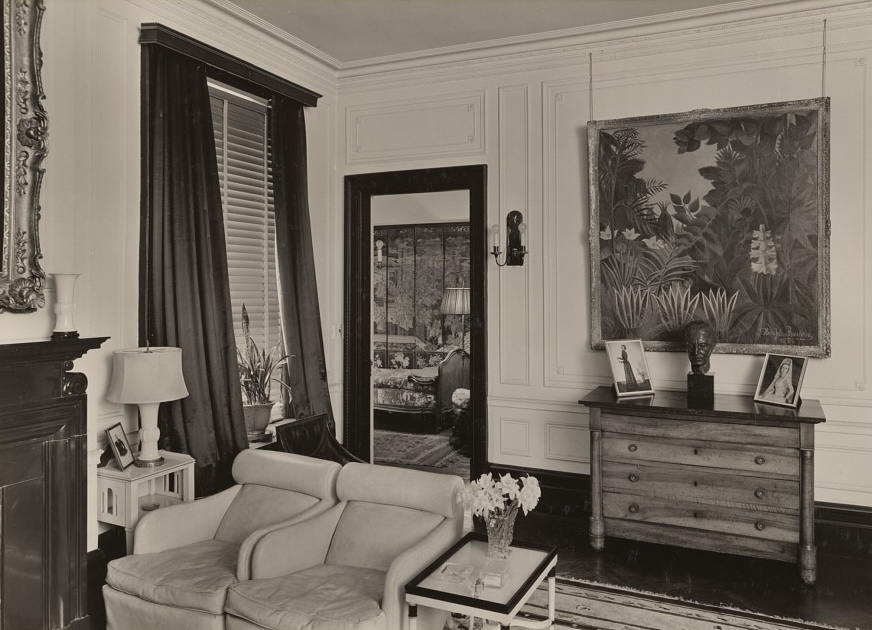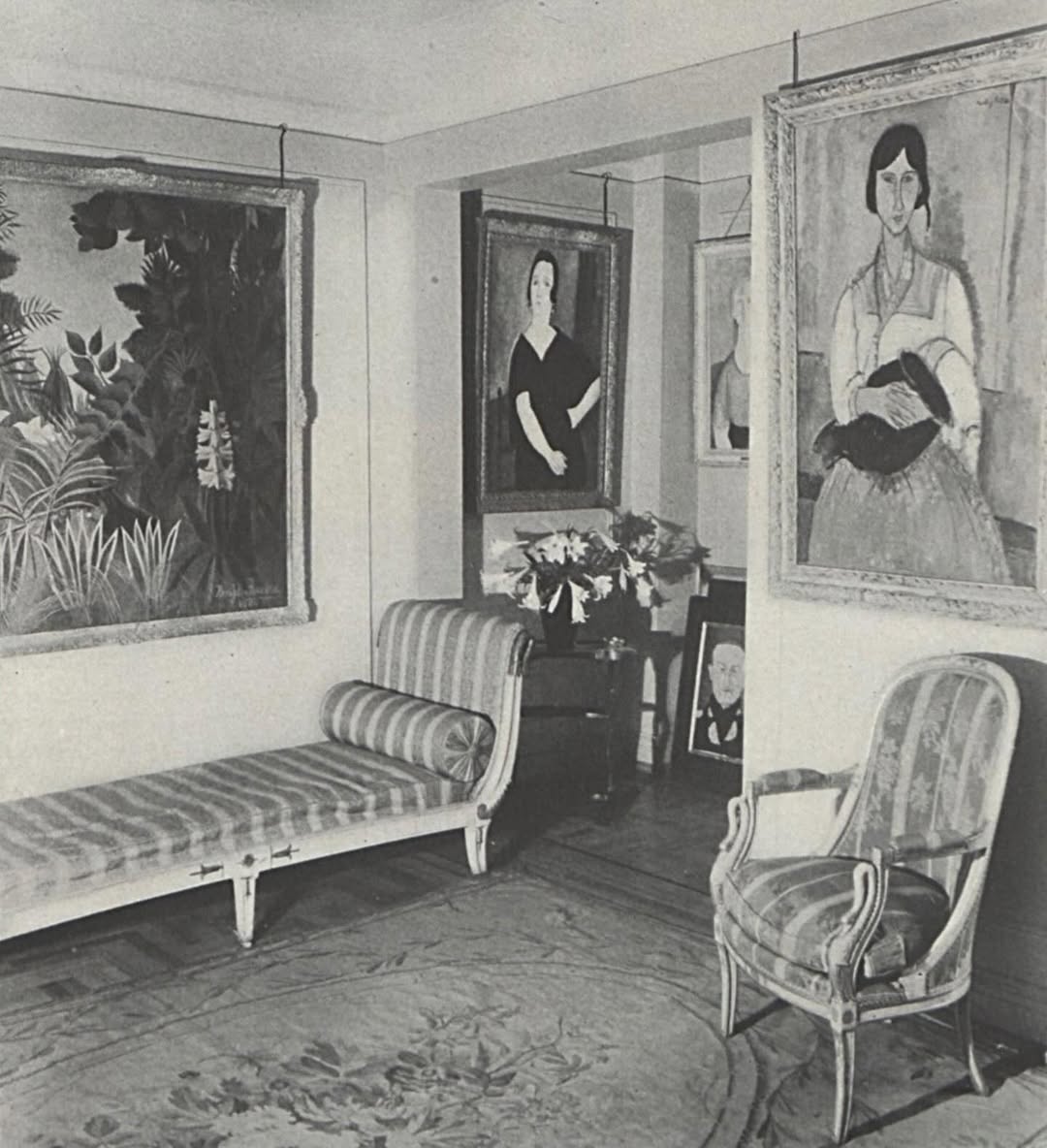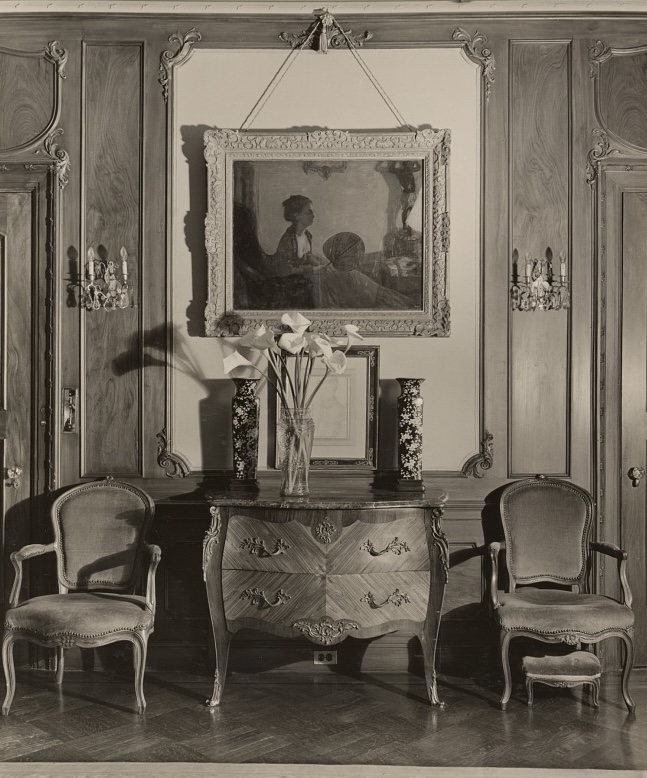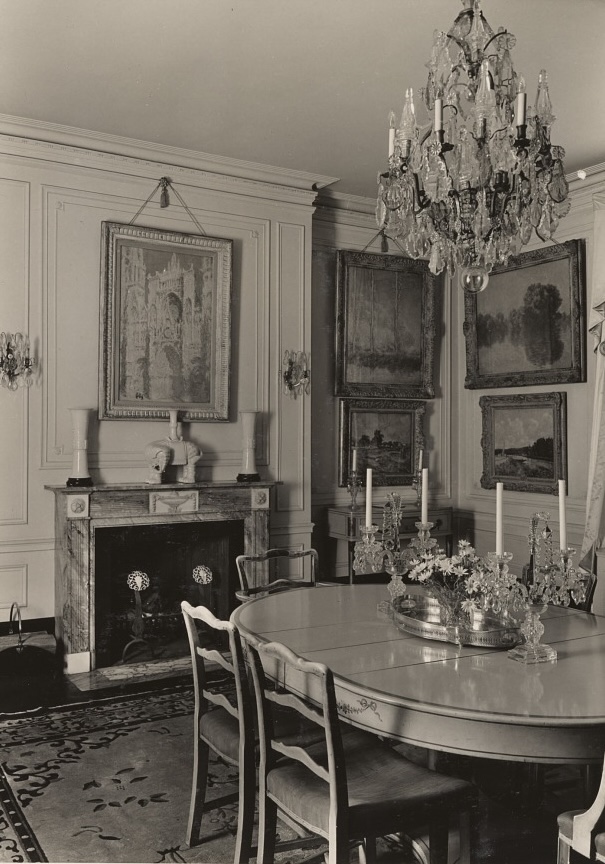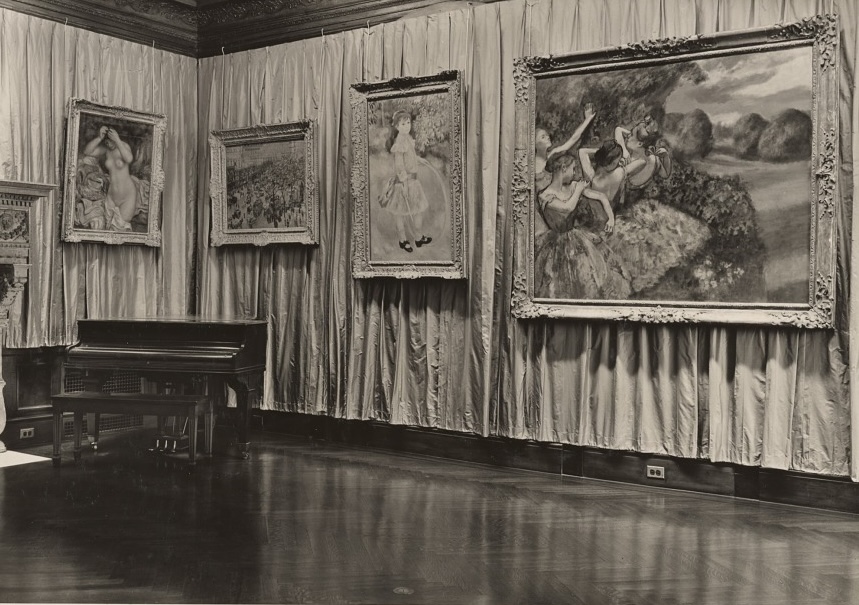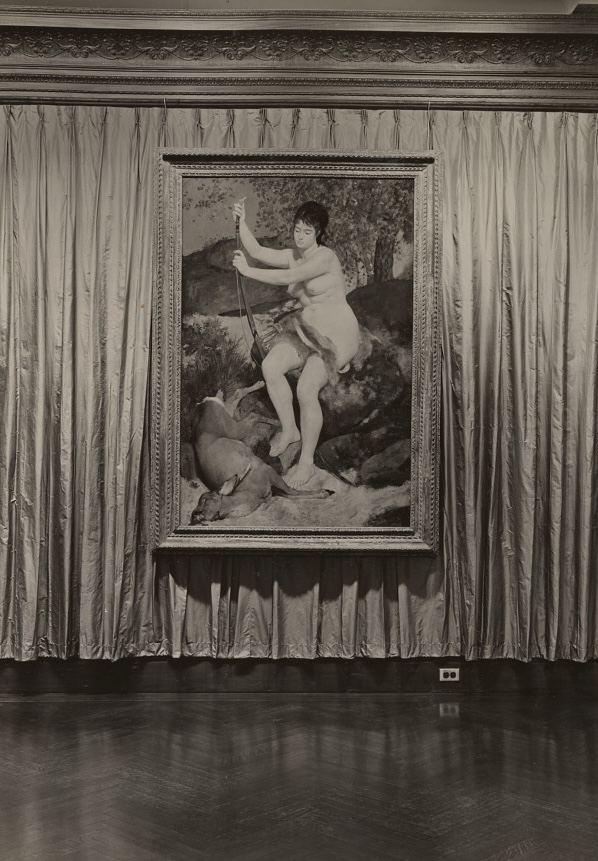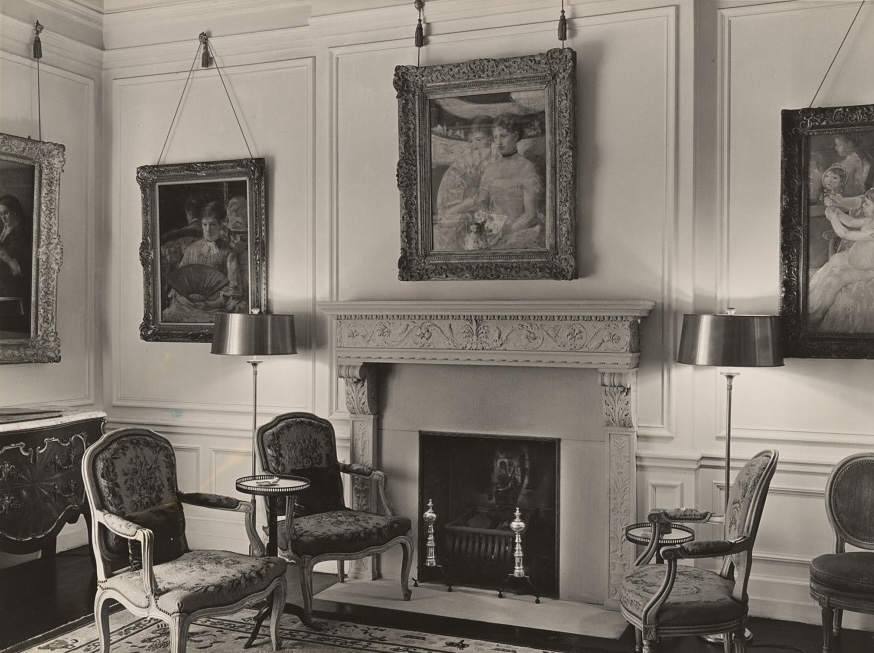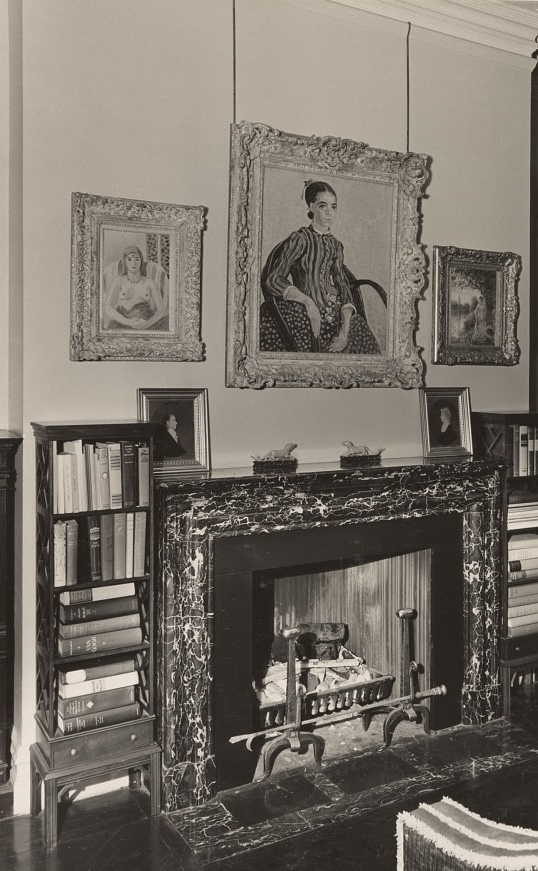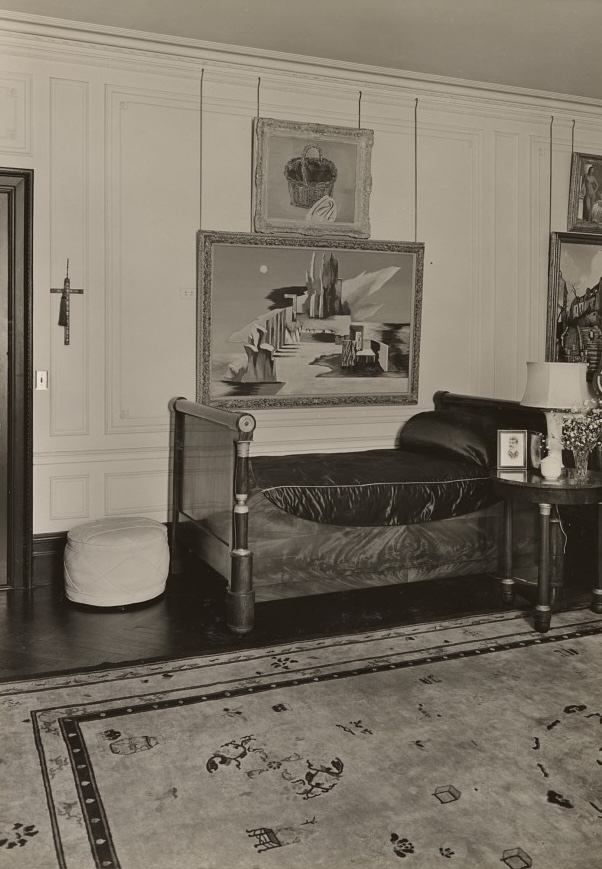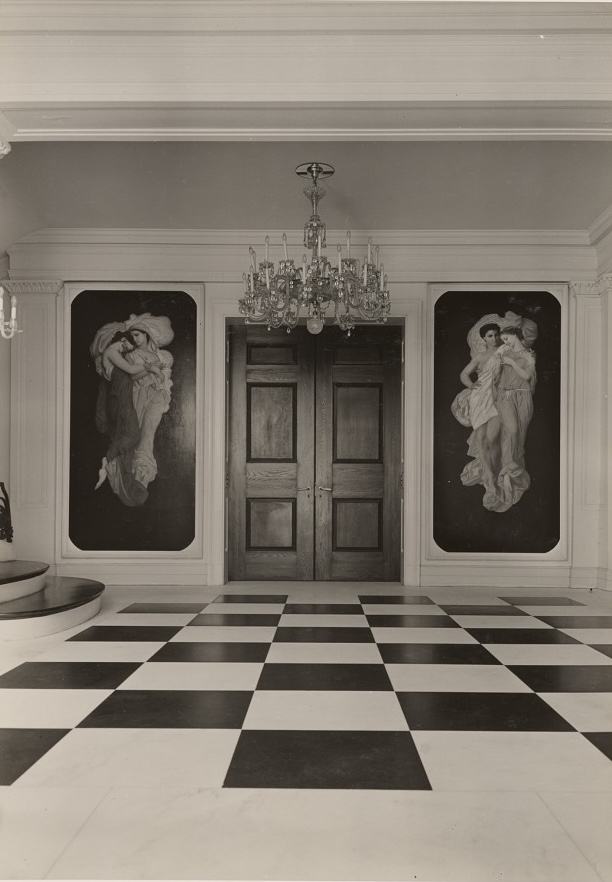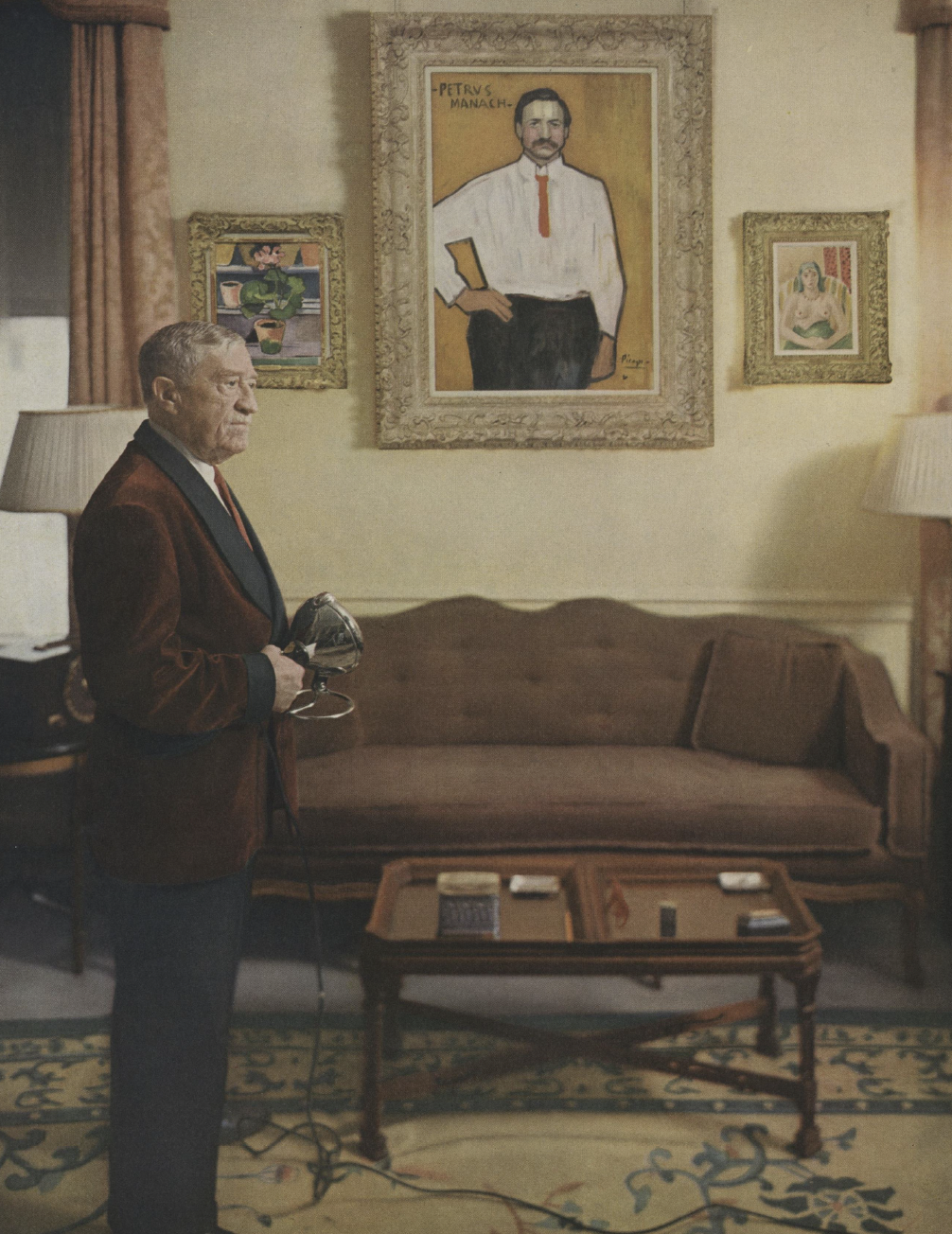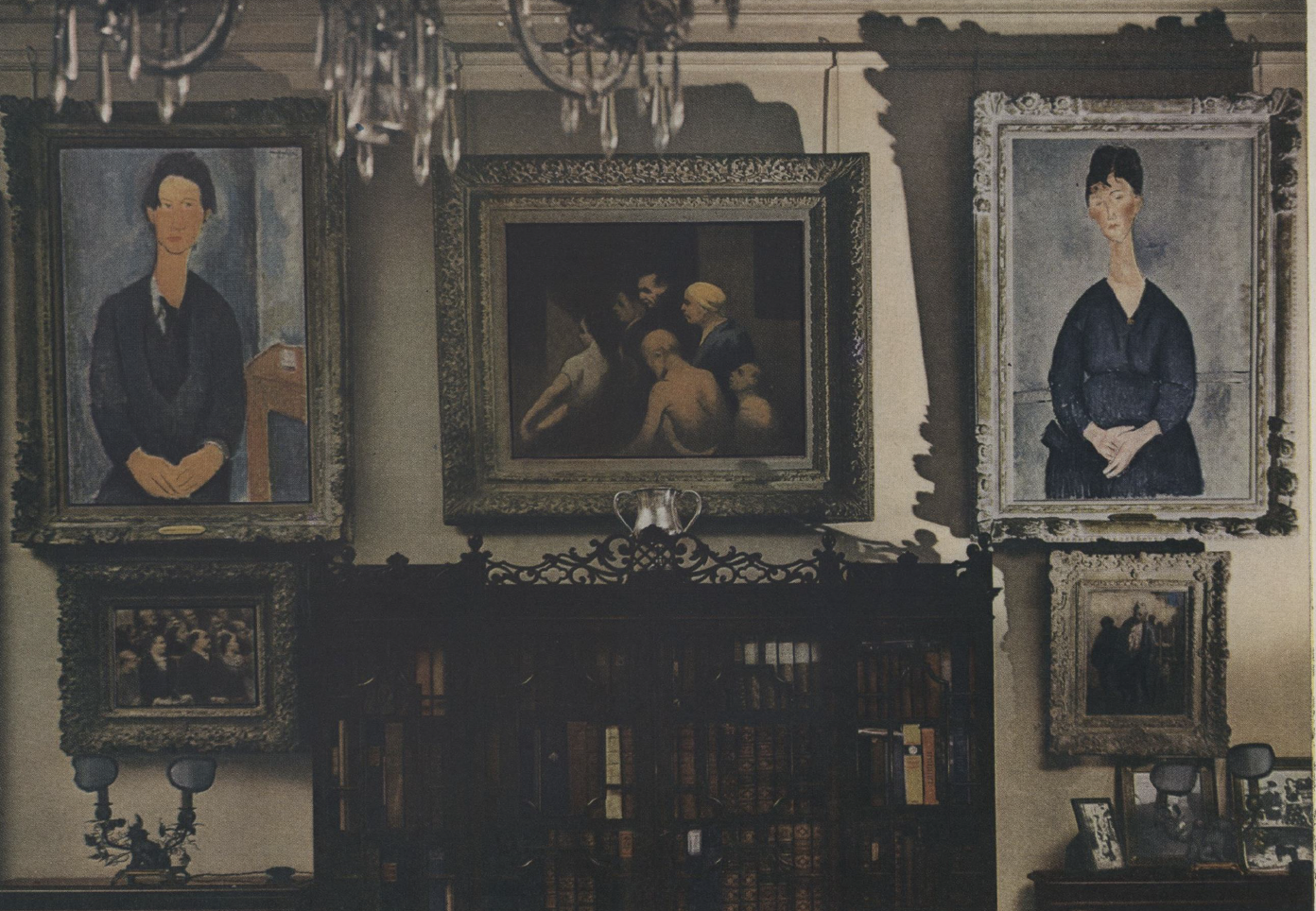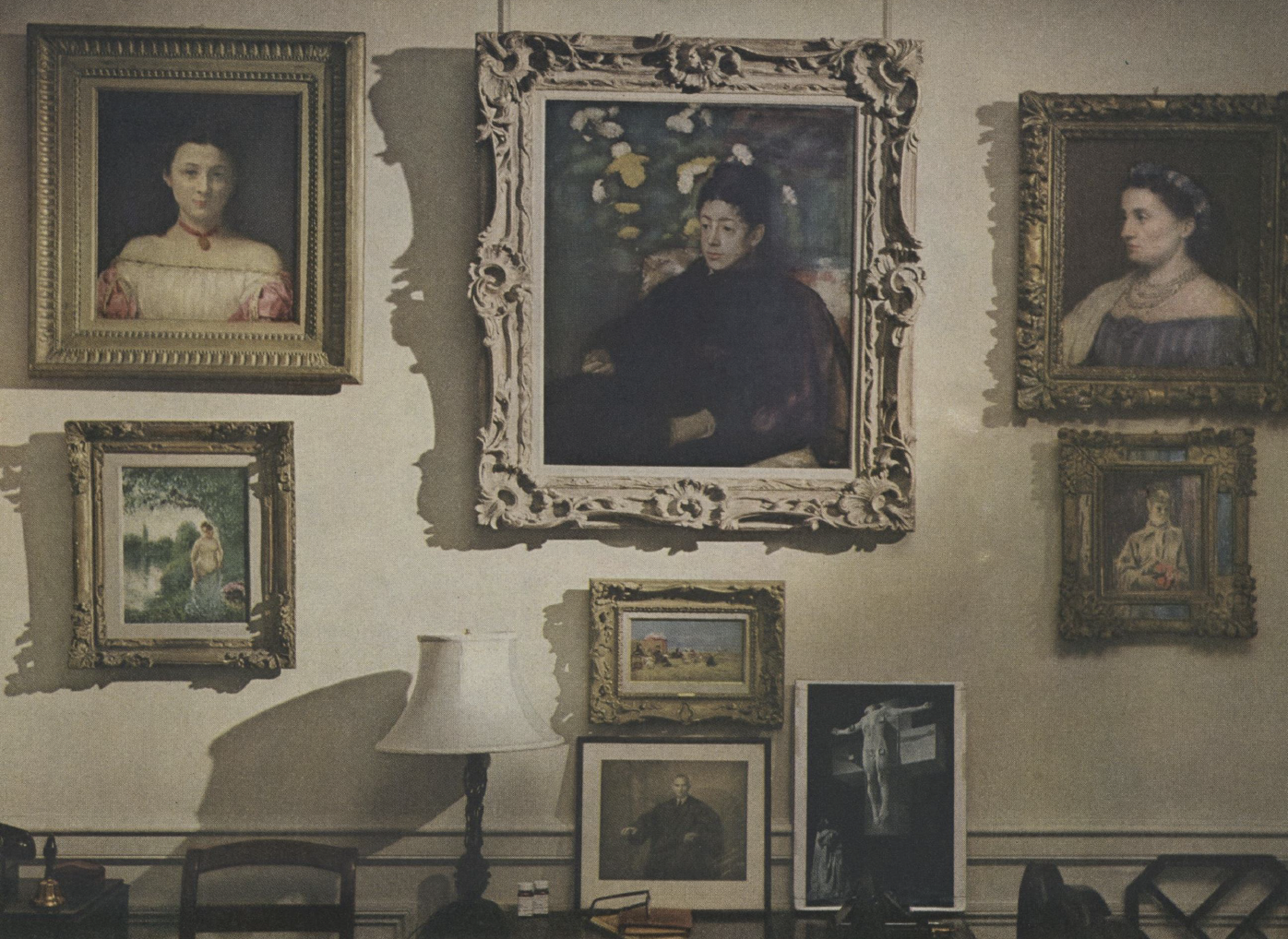The Collector: Chester and Maud Dale
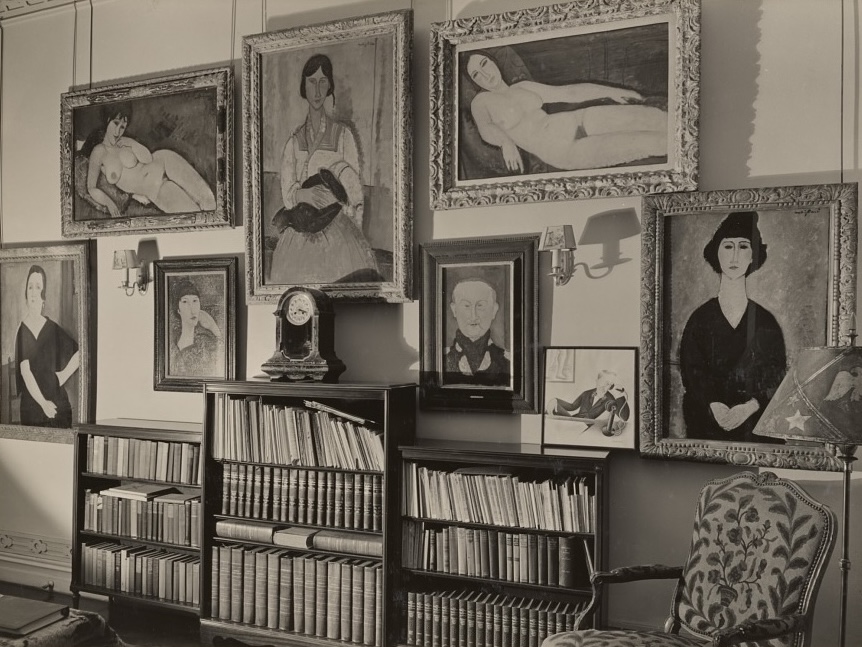
The Collector10.15.2025
Chester Dale (1883–1962) was born in New York City, the son of a department store salesman. He began his career as a runner on Wall Street. Hardworking and ambitious, he became a prominent and wealthy investment banker by specializing in the sale of railroad mortgages and public utility securities. [1]
Agnes Maud Murray Thompson Dale (1875–1953) was born in Rochester, New York, the daughter of a newspaper editor. The Murrays relocated to New York City in 1886, and Maud enrolled in the Art Students League in 1893. She later went to Paris and studied painting and printmaking. In 1898 she married fellow art student Frederick M. Thompson, and they shared one son. Maud divorced Thompson in April 1911, and married Chester soon after. [2]
When the couple first married, they lived at 132 East 19th Street, known as “the Block Beautiful” for its vibrant artistic community. Maud introduced her new husband to art collecting. Chester once remarked: “She loved the paintings, I did all the buying.” [3] Guided by his wife’s advice and eye, Chester initially collected American artists like George Bellows, a neighbor who the couple commissioned to paint individual portraits. By the mid-1920s the Dales had assembled one of the largest and most important private collections of modern art in the United States.
With Chester’s 1925 acquisition of Henri Matisse’s 1919 work “The Plumed Hat,” the couple ventured into Impressionism. [4] The couple began regularly traveling to Paris, with Maud fostering introductions to influential artists, dealers, and gallery owners. Between 1926 and 1936, the couple acquired more than 650 works by luminaries like Cézanne, Modigliani, Monet, Degas, Picasso, Renoir, and Van Gogh. “I once brought home seventy paintings from Europe at a clip,” Chester said. [5] He continued to buy throughout the Depression and acquired 100 works in 1930 alone, including his largest and single most expensive painting, Edouard Manet’s “The Old Musician.” [6]
There is a heavy emphasis on portraiture in the Dale collection, likely a result of Maud’s appreciation for the format. She once wrote that “portraits are the documents by which not only the individual but his epoch can be recreated.” [7]
The couple’s collection regularly outgrew their homes. In 1927, the Dales took over an entire upper floor—four apartments—of the new Hotel Beverly at 125 East 50th Street. A 1931 article described the scene: “In the last three rooms, the paintings seem to compete for wall space as if vying for an unattainable prize. Many works of global renown are here stacked in folders directly on the floor; to view them, one must place them one by one on easels, in favorable light,” wrote the American art critic Henry McBride. “...They [the collectors] seem to suggest that the collection has now taken on a life and will of its own; its growth appears beyond their control.” [8]
By 1931, the Dales' had outgrown their living space yet again. They occupied the entire 35th floor of the newly constructed Carlyle Hotel at 35 East 76th Street. Despite creative storage solutions, the couple required more space. [9] In 1933, Chester purchased a mansion at 20 East 79th Street and Maud transformed the residence into a semi-public gallery, hosting tours for students and art-lovers. [10]
Chester’s collecting slowed in the 1940s and 50s, perhaps due to Maud’s declining health. “I can't buy any pictures now,” he said in 1959 of his purchase of Edouard Vuillard’s “The Visit” (1931). “I can't find anything as good as what I have.” [11]
Beginning in the early 1940s, Chester loaned and gifted many masterpieces to the National Gallery of Art, where he served as trustee and president. [12] He would also be also a trustee of the Metropolitan Museum of Art, the Museum of Modern Art, the Art Institute of Chicago, and the Philadelphia Museum of Art [13]. Upon his death in 1962, Chester bequeathed 240 paintings to the National Gallery, in addition to sculptures, works on paper, catalogues, books, and other ephemera. His estate subsequently donated more pieces, bringing the total number of paintings in the Chester Dale Collection to over 300. [14]
SOURCES
[1] “From Impressionism To Modernism: The Chester Dale Collection,” National Gallery of Art.
https://www.nga.gov/sites/default/files/2025-07/dale_brochure.pdf
[2] Torchia, Robert. “American Paintings, 1900–1945: Maud Murray Dale (Mrs. Chester Dale), 1919.” National Gallery of Art. https://www.nga.gov/research/publications/online-editions/american-paintings-1900-1945-maud-murray-dale-mrs-chester
[3] John Walker, Self-Portrait with Donors (Washington, DC, 1969), 162.
[4] “From Impressionism To Modernism: The Chester Dale Collection,” National Gallery of Art.
[5] Saarinen, Aline B.. “New Regime at the National Gallery.” The New York Times, May 6, 1956 https://www.nytimes.com/1956/05/06/archives/new-regime-at-the-national-gallery-chester-dale-president-and.html
[6] “From Impressionism To Modernism: The Chester Dale Collection,” National Gallery of Art.
[7] [Ibid]
[8] McBride, Henry. Translation from English by Armand Pierhal. “La Collection Chester Dale à New York.” Formes, revue internationale des arts plastiques, April 1931, vol. 14, pp. 57-58. Gallica.
[9] National Gallery of Art Archives. Chester and Maud Dale Papers - [Series Title].
[10] Canaday, John. “Art: Gentle, Poetic, Above All, Happy; Dale Private Collection Includes 240 Works.” The New York Times, May 6, 1965.
“https://www.nytimes.com/1965/05/06/archives/art-gentle-poetic-above-all-happy-dale-private-collection-includes.html
[11] “Dale Adds Vuillard's 'The Visit' To His 700 Specimens of Art.” The New York Times, June 2, 1959.
https://www.nytimes.com/1959/06/02/archives/dale-adds-vuillards-the-visit-to-his-700-specimens-of-art.html
[12] Saarinen, Aline B.. “New Regime at the National Gallery.”
13] “Chester Dale, 77, Art Patron, Dies.” The New York Times, December 18, 1962
https://www.nytimes.com/1962/12/18/archives/chester-dale-77-art-patron-dies-head-of-national-gallery-had-a.html
[14] “The Chester Dale Bequest,” National Gallery of Art. https://www.nga.gov/exhibitions/chester-dale-bequest
Image: Modigliani: “Madame Amédée (Woman with Cigarette)” (1918); “Nude on a Blue Cushion” (1917); “Adrienne (Woman with Bangs)” (1917); “Roma Woman with Baby” (1919); “Nude on a Divan” (1918); “Léon Bakst” (1917); “The Italian Woman” (1918-19)
